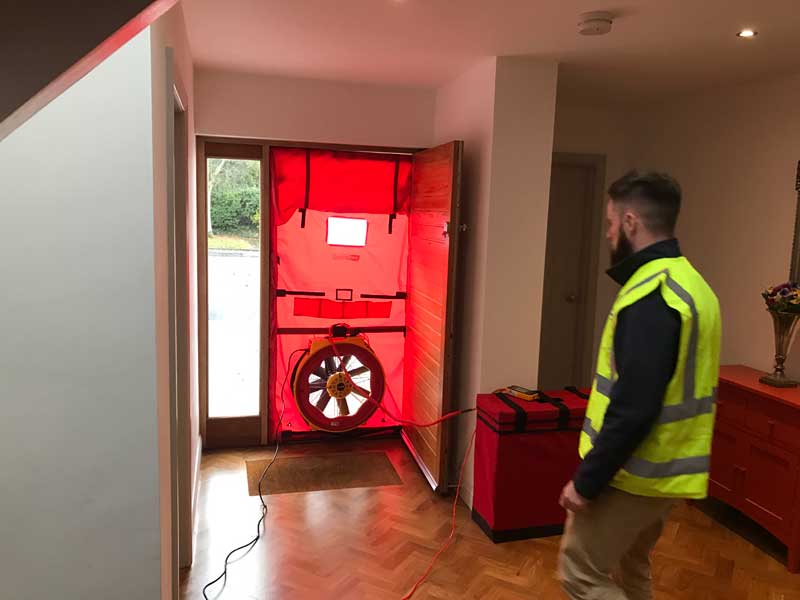Air Tightness Testing
The purpose of an air tightness test on your home or building is to identify any unconrolled passage of air anywhere within the building envelope. This passage of air can massivley increase the amount of energy needed to run the building / home.
An air tightness or blower door test can detect where insulation may be lacking or where doors or windows are not properly sealed, allowing you to fix these issues and dramatically increase the energy performance of your home

See How We Conduct Our Air Tightness Testing
We offer a quick and efficient service to identify problem areas and provide you tailored information to rectify any issues
Initial Assessment
Step One
On arrival to your property, we will require your consent to access every room in the house. We then invite you to show us around your home, pointing out any areas that trouble you like drafts, cold spots or rooms that are difficult to keep warm.

Prepearation and Setup
Step Two
All planned ventilation will then be sealed to ensure the home is made airtight for our inspection.
Once we set up our blower door system at an external door, It generates a vacuum inside the house, drawing cold air from outside in.
This stimulates a strong wind hitting the house from all directions and will reveal any areas where heat is quicklky escaping to our thermal camera
Inspection of Each Room
Step 3
Once setup is complete and the blower door has had time to lower the air pressure throughout the building, we go from room to room inspecting the building envelope. Combined with thermal imaging we can identify any areas where there is significant air leakage causing excess heat loss.
When the inspection has been completed we will provide you with a detailed report outlining any problem areas as well as steps you can take to fix any issues
Homeowner Preparation Checklist for Blower Door Inspection
To ensure accurate and effective results during your inspection, please prepare your home by
completing the following steps.
By following this checklist, you’ll help us deliver the most accurate and comprehensive results for your home. If you have any questions about these preparations, please don’t hesitate to contact us before your scheduled appointment!
Close All Exterior Doors and Windows
Ensure all exterior doors, windows, and skylights are shut securely.
Open All Interior Doors
Leave all interior doors open to allow airflow throughout the home.
Turn Off HVAC Systems
Switch off heating, air conditioning, and ventilation systems during the inspection.
Extinguish Open Flames
Put out any candles, fireplaces, or gas appliances to avoid interference with the inspection.
Secure Pets
Keep pets in a safe area away from the testing equipment for their safety and to ensure accurate results.
Access To Outlets
Ensure a standard electrical outlet is accessible near the entry door for the blower door fan.
Turn off Exhaust Fans
Turn off bathroom and kitchen exhaust fans to prevent airflow disturbances.
Adjust Indoor Temperature
Set your home’s heating or cooling system so there is at least a 5°C difference between indoor and outdoor temperatures. This helps highlight insulation gaps and air leaks.
Clear Access to Walls and Windows
Move furniture, curtains, and any large objects away from exterior walls, doors, and
windows to allow unobstructed thermal scans.Provide Access to All Areas
Ensure we can access all parts of your home
Inform us of Special Conditions
Let us know if there are unique features, sensitive equipment, or areas requiring special
care.
Ready To Have a Warmer Home?
Book your survey today and start cutting your energy costs in a warmer home.



